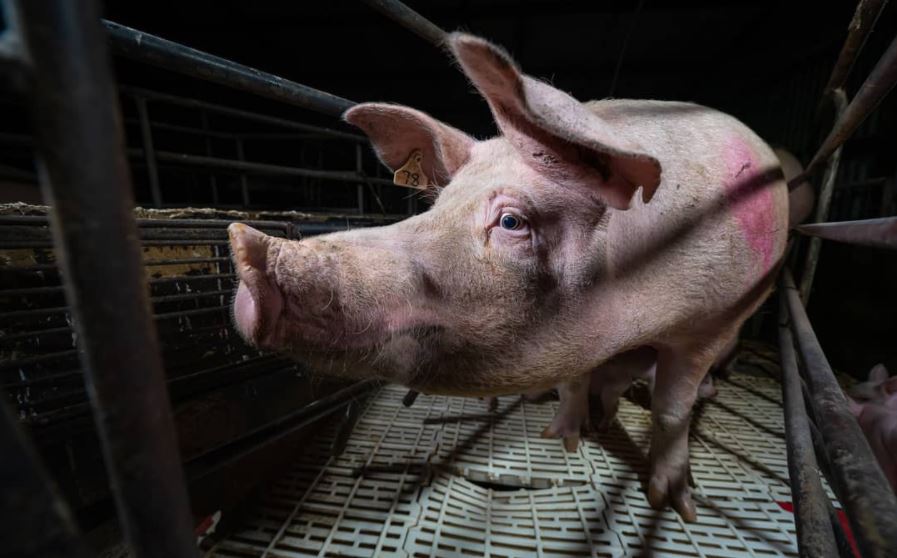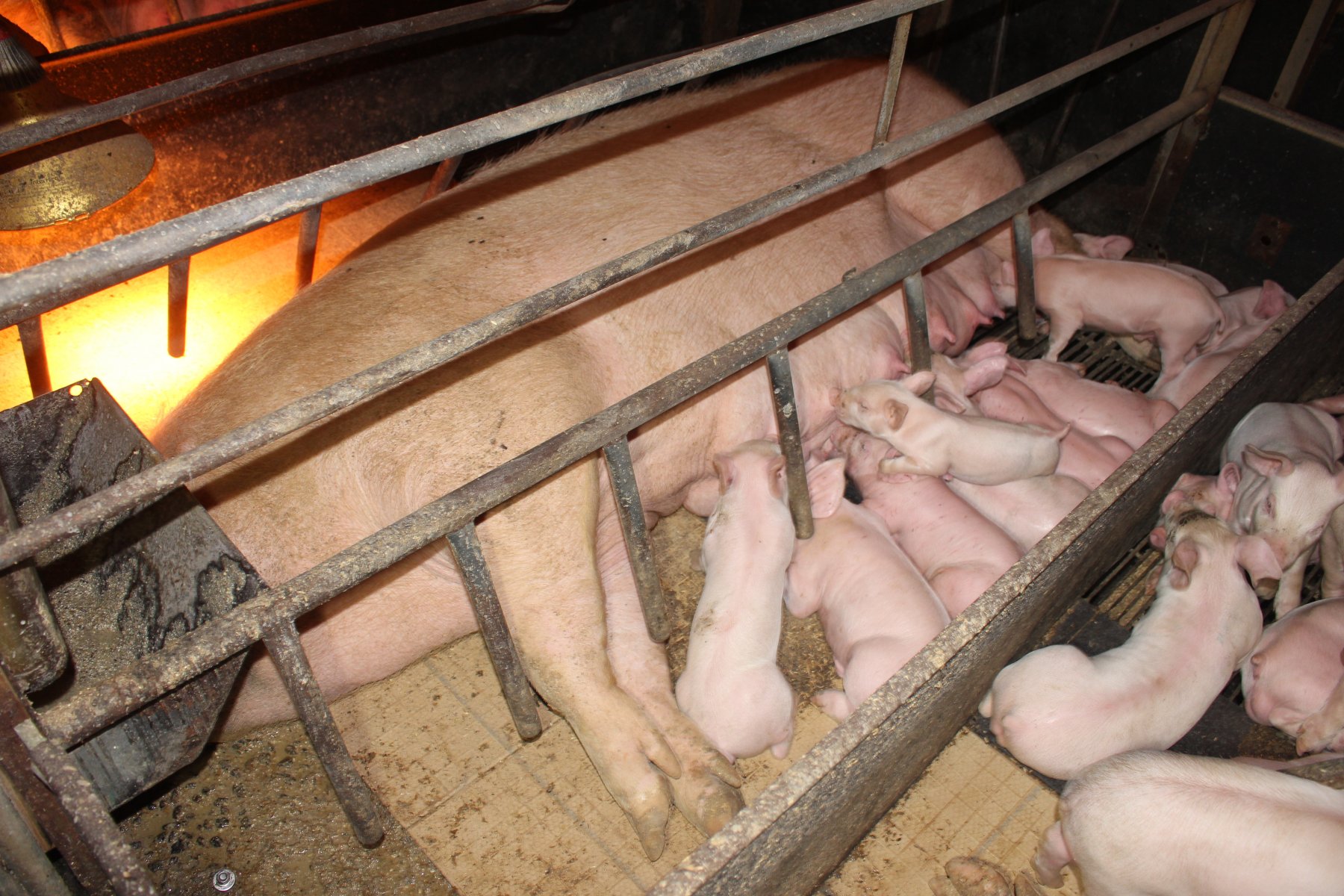Farrowing Crates
When a sow is close to giving birth, it is standard industry practice to move her from group/loose housing into a farrowing crate. A farrowing crate is a small metal cage in which sows are confined while they give birth and nurse their piglets until they are moved to 'weaner' pens.
 A sow confined to a farrowing crate.
A sow confined to a farrowing crate.
A farrowing crate affords sows little room to do anything; generally they can take one step forward or backward or lay on the concrete floor so their piglets can nurse from them, but they can't turn around.
Farrowing sheds can house hundreds of sows with their babies and are touted by the industry as a necessity to keep mother pigs from crushing their offspring ('overlay'). The reality is that, even in farrowing crates, investigators have found piglets crushed by their mothers. The industry is incentivised to use farrowing crates as confining sows in cages reduces the amount of space a pig farm takes up and allows an operator to maximise sow and piglet numbers, maximising profits.

The legally accepted amount of space for sows in farrowing crates is 0.5 meters wide by 2 meters long. Each sow is kept in one of these crates for approximately six weeks until her piglets are weaned, at which point she is re-impregnated, and this exploitative cycle begins again.
Evidence gathered by investigators shows farrowing sheds full of injured, sickly, dying, or dead piglets (often in their crates next to their mothers) and injured sows. Piglets have been found crushed underneath their mothers, undermining the supposed purpose of farrowing crates.
The sows often have trouble standing up or lying down due to injuries and weakened muscles. Even when they lie down on top of one of their babies, they are often unable to get back up. They are also unable to move away from their piglets to find a safe place to lie down.


